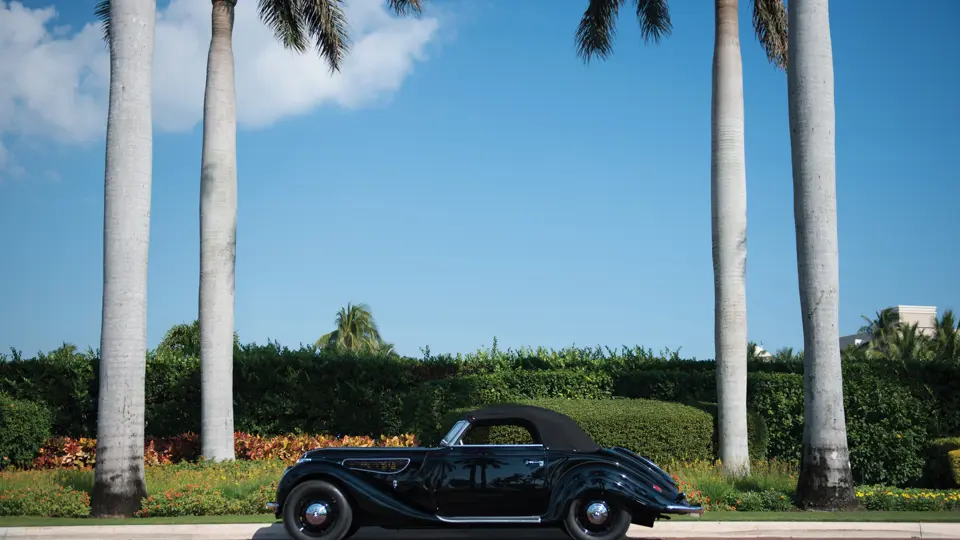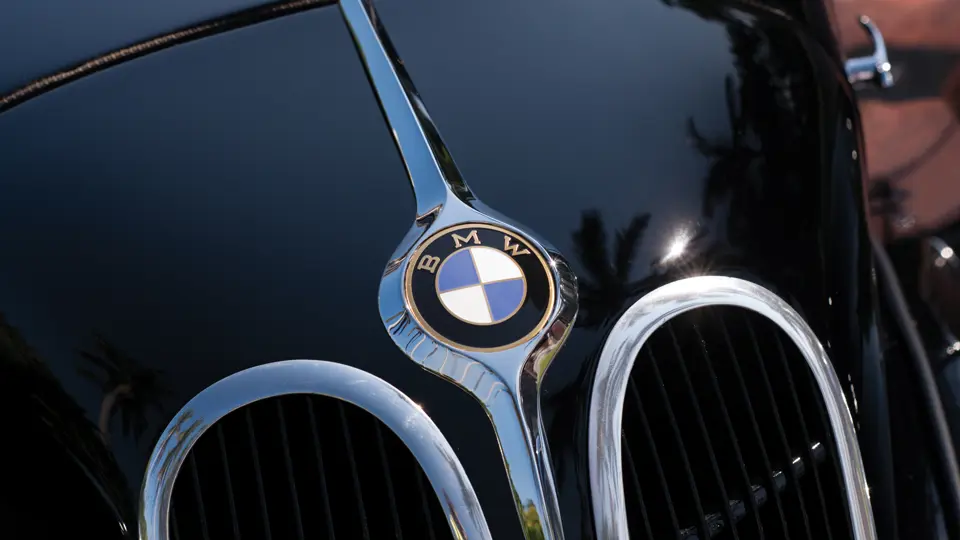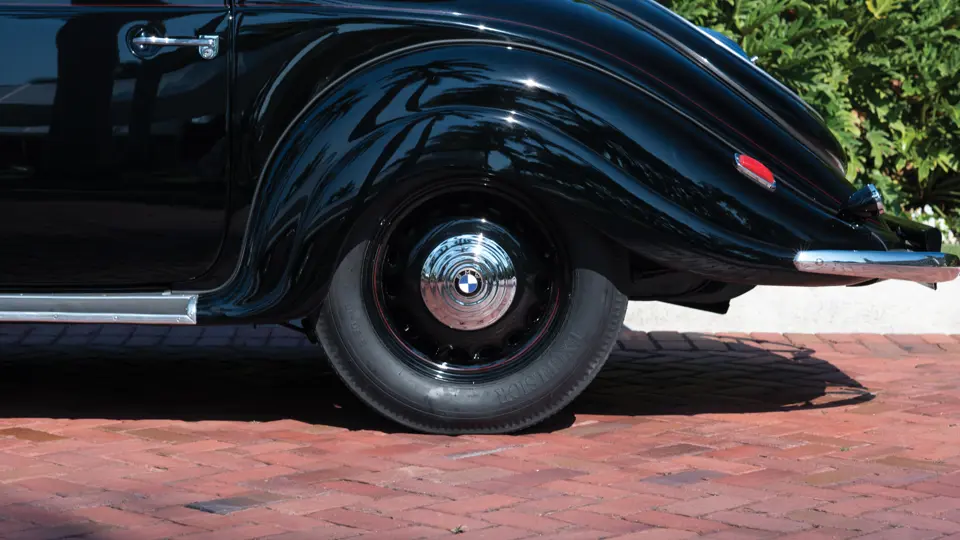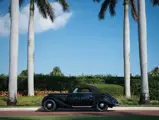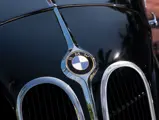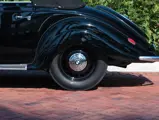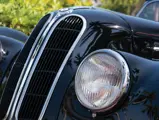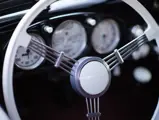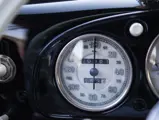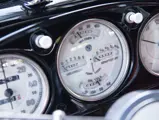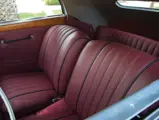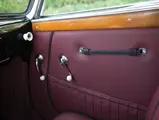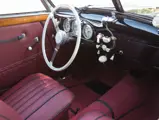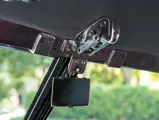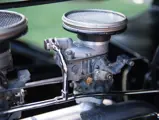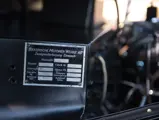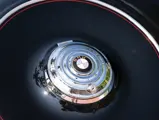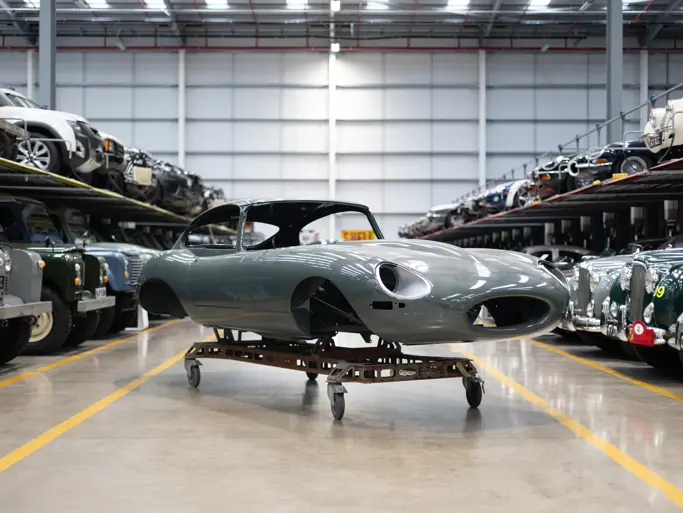55 bhp, 1,971 cc OHV six-cylinder engine, four-speed manual transmission, independent front suspension with transverse leaf spring, live rear axle with semi-elliptic leaf springs, and four-wheel hydraulic drum brakes. Wheelbase: 108.3 in.
The Bayerische Motoren Werke was fully a decade old before its first automobile was built. Originally an aero engine manufacturer, the company purchased the Dixi Werke of Eisenach in 1928 and continued to manufacture the smallest Dixi product, a license-built version of the Austin Seven. The BMW badge was adopted for these cars in January 1929.
Growth was rapid. By 1934, BMW was building the Type 315, a 1,490-cubic centimeter car available in 40 brake horsepower, triple-carburetor tune. The 1936 Berlin Auto Show heralded an important BMW development, the 326. As the company’s first four-door sedan, it had a 1,971-cubic centimeter, 50 brake horsepower engine, and it was capable of 72 mph. More streamlined than earlier BMWs, its styling would define the marque until World War II. The 326 begat several variations that overshadowed the parent model: the 320, a cheaper four-cylinder car, and the 327, a short-chassis, two-seat coupe or convertible.
Launched in 1937 as a sport cabriolet, the 327 featured the M-78 six-cylinder engine with twin Solex carburetors. Higher compression gave it five more horsepower than the 326, and a shorter wheelbase translated in to less weight and a top speed of 78 mph. A smart coupe joined the line for 1938. In recent years, the short chassis 328 had taken the limelight, as it lent its engine to a series of 327s designated “327/28.” But in its day, it was the 327 that remained more popular, with 1,304 built between 1937 and 1941, most of them as sport cabriolet models.
The popularity didn’t end there. At the end of World War II, BMW’s Munich factory was in ruins, and its Eisenach plant was in the Eastern Zone of partitioned Germany. Production resumed there, but the name was changed to Eisenach Motoren Werke, and the cars were badged “EMW.” Production of the 327 resumed in 1948 and continued into 1956, but while in Britain, the 1,971-cubic centimeter engine was produced by Bristol and used in the new 400 Series.
This car, chassis 87279, has just been freshly restored by Black Horse Garage, located in Bridgeport, Connecticut. Finished in stunning black paint, the exterior contrasts nicely with the all new, red leather interior. The seats are piped in black, while the interior is complemented with matching red carpeting. The new, black canvas top with a grey wool headliner against the all black body produces an air of sophistication that sets this BMW apart from those that typically wear a multicolored paint scheme. The newly chromed brightwork and a thin red pinstripe finish off the elegant BMW 327. In January 2013, this car was invited by the organizers of the famed Cavallino Classic to their Classic Sports Sunday Concours at Mar-a-Lago in Palm Beach, Florida, where it made its debut. It ultimately took home an Excellence in Class Award, attesting to the quality of its restoration and uniqueness of this beautiful sport cabriolet.






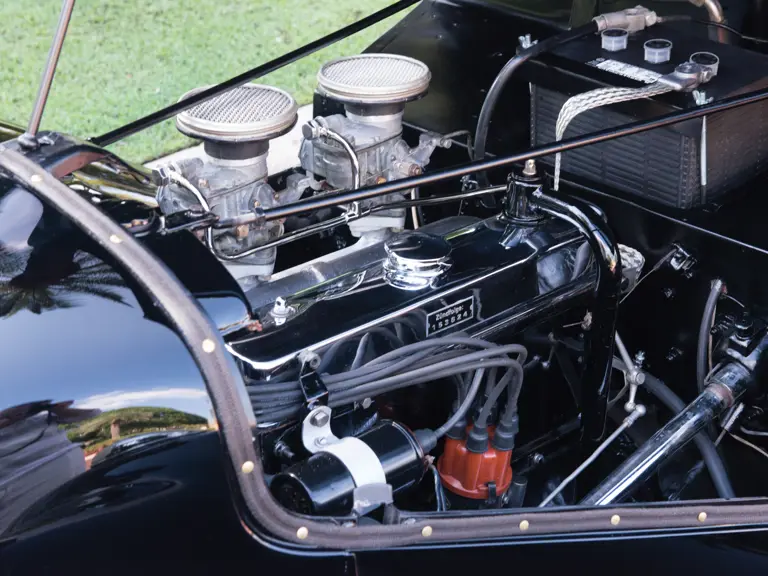
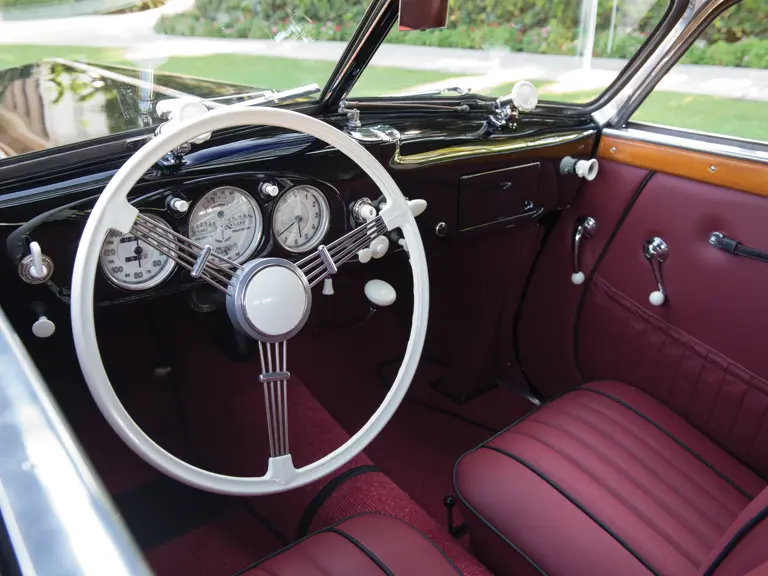
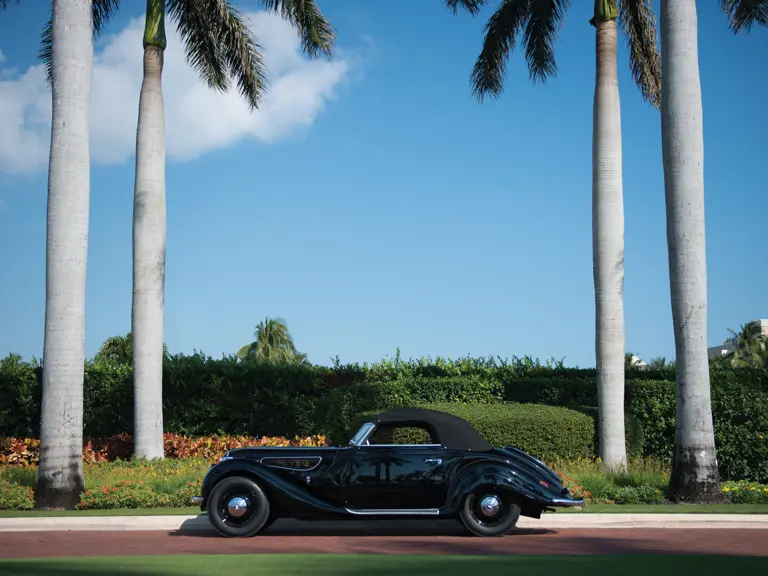
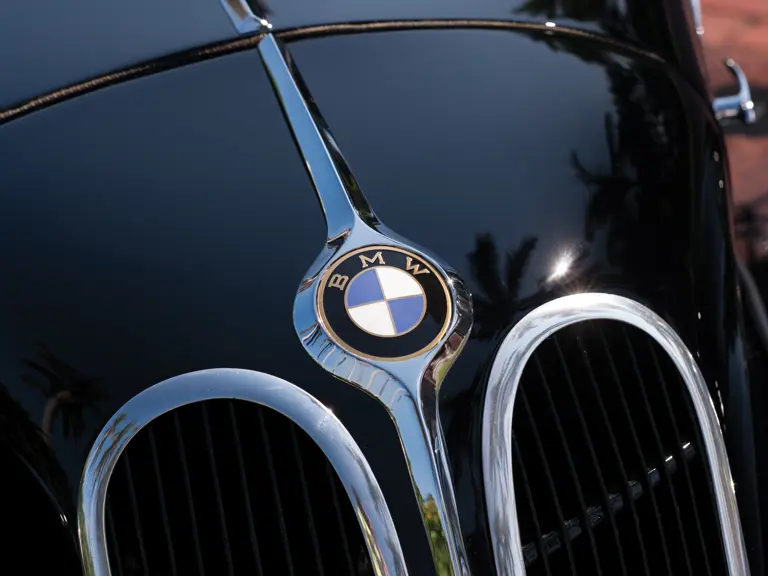
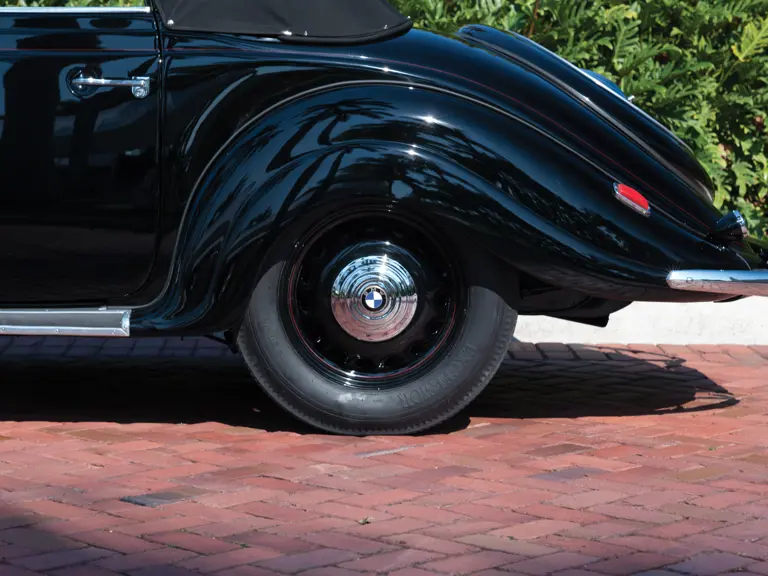
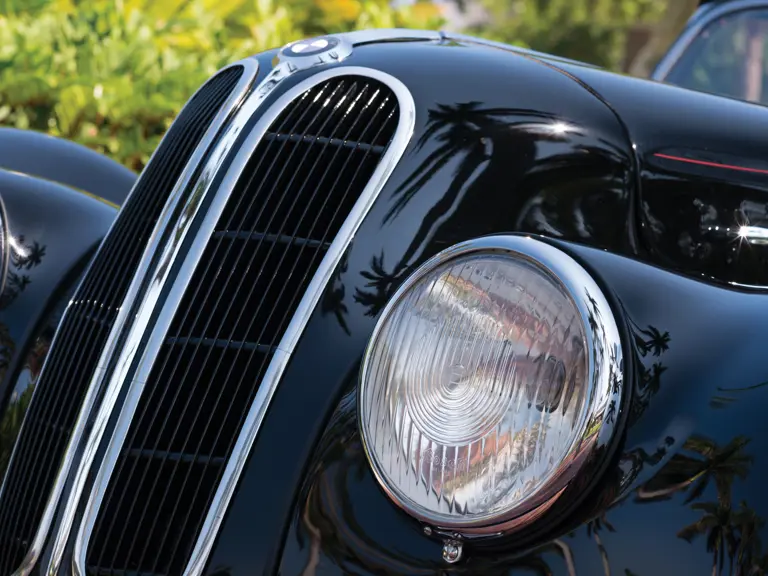
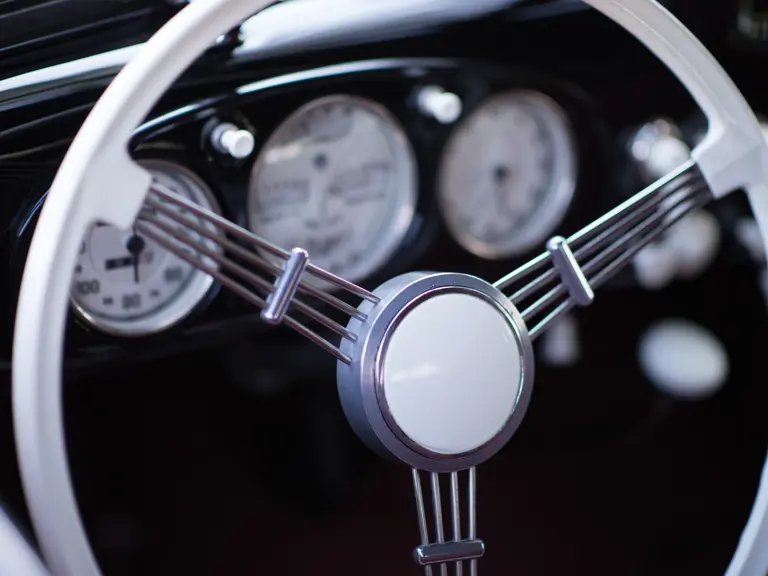
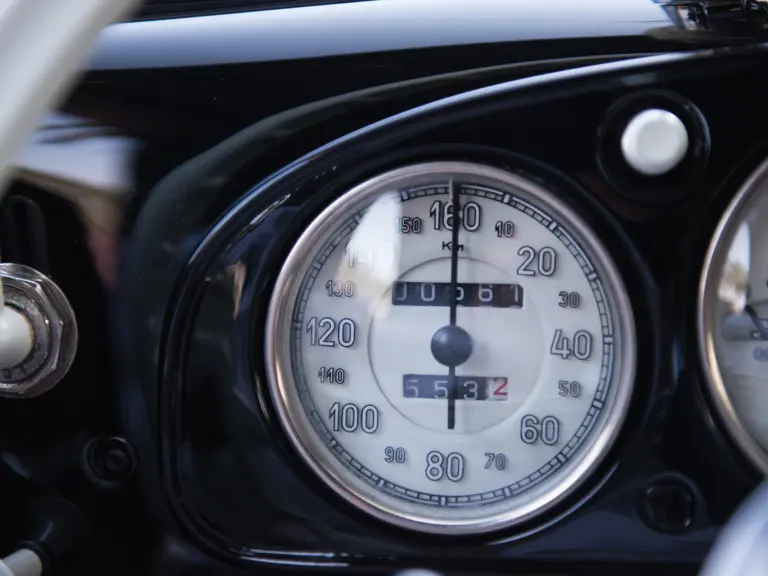
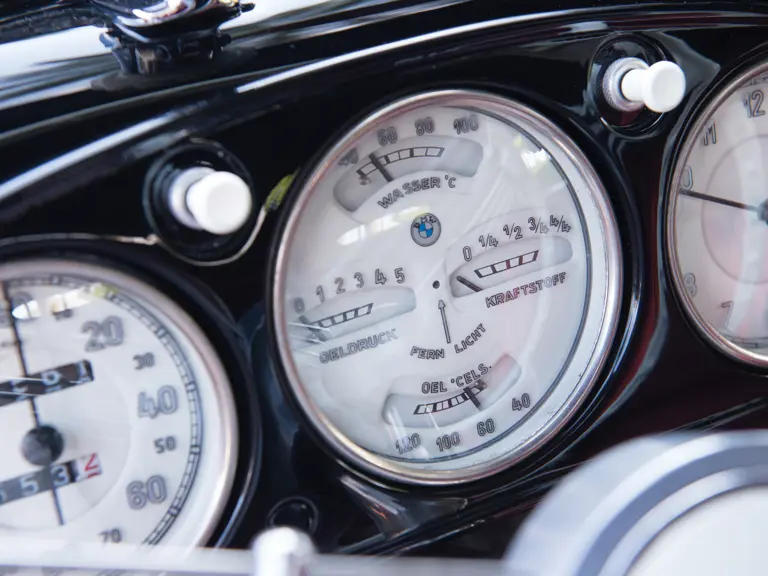
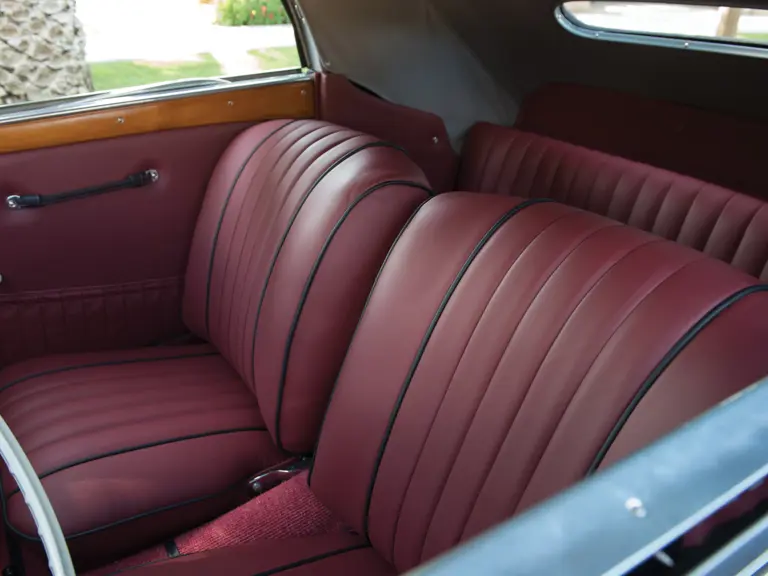

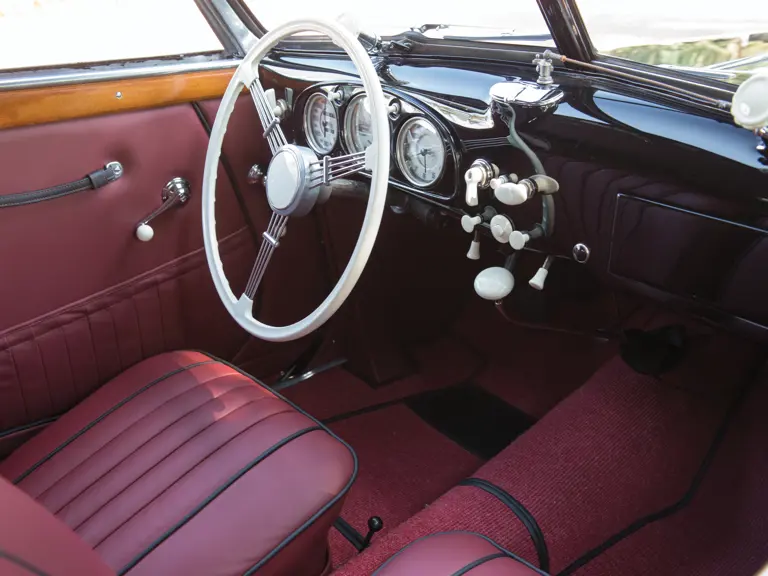
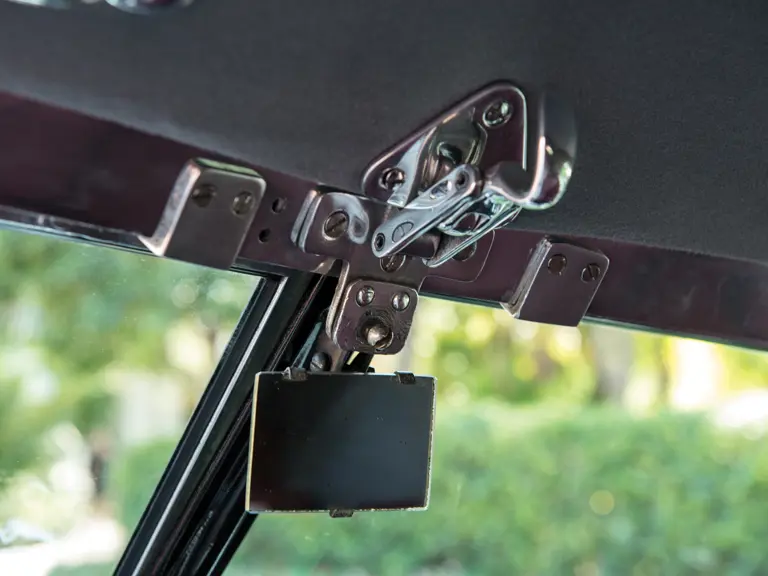
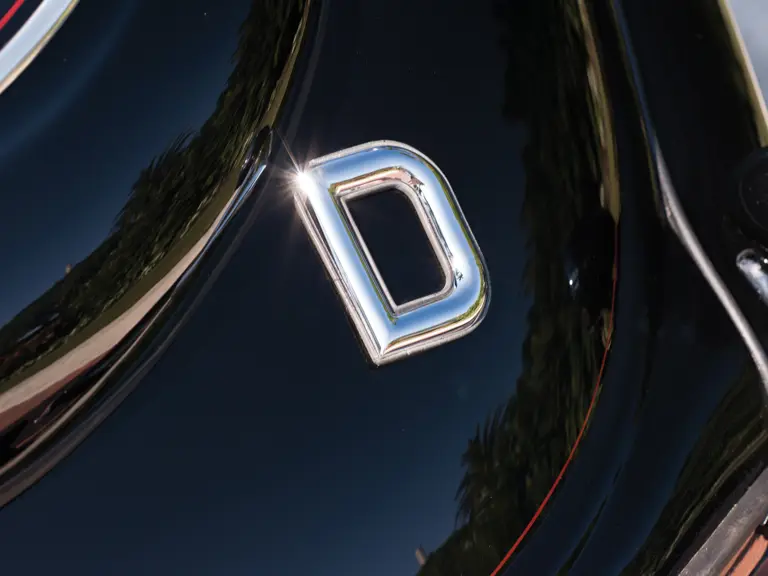
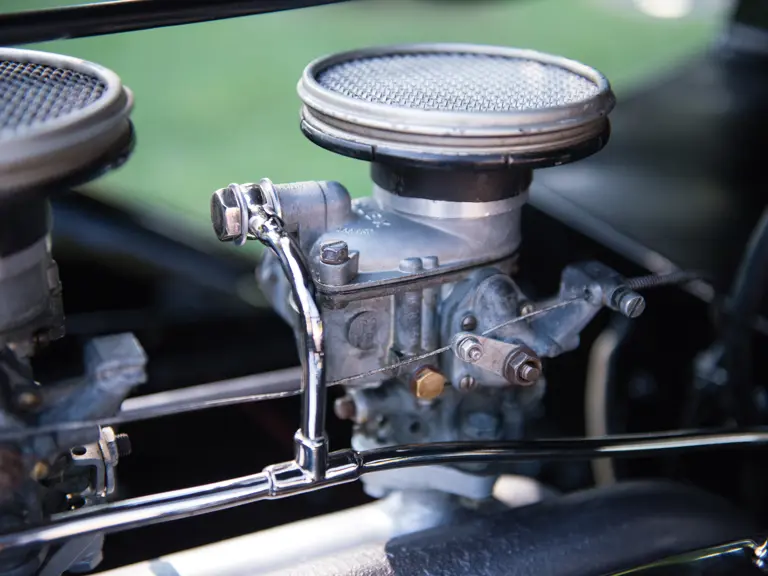
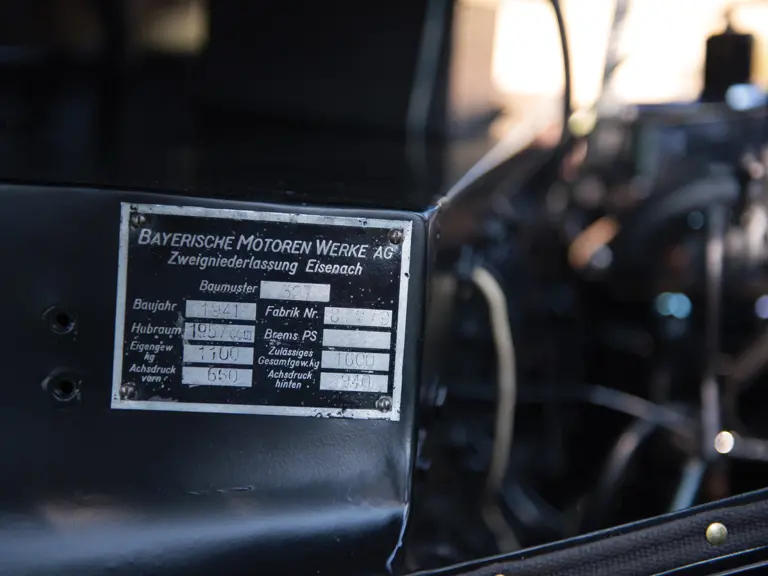
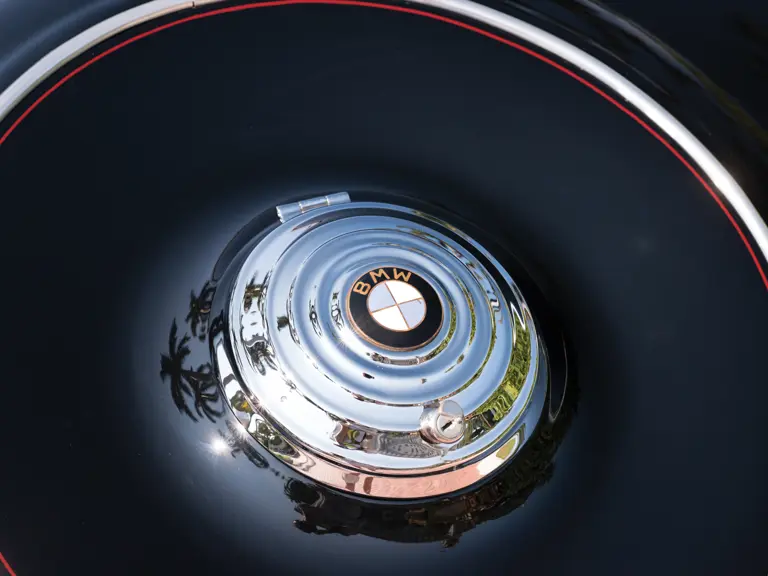
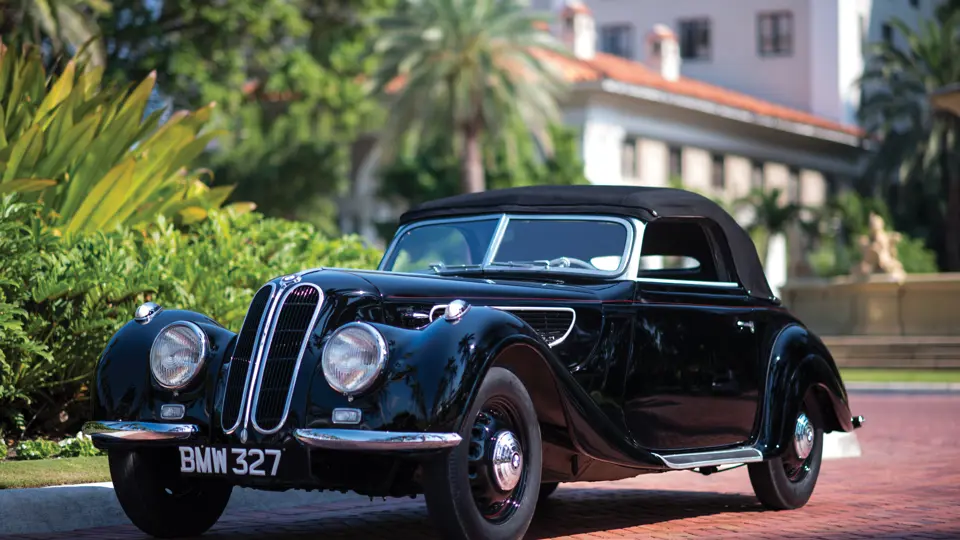
 | Amelia Island, Florida
| Amelia Island, Florida
